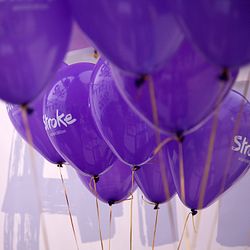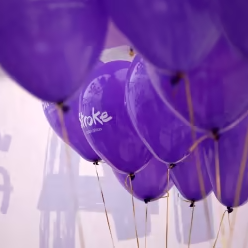
News -
Integrated Care Systems pose a potential risk to improving stroke care
Stroke is a devastating and all too common condition. It is a sudden brain attack which happens to someone every five minutes in the UK, and two-thirds of survivors leave hospital with a disability.
This is not inevitable; those statistics are entirely reducible. This is why we need to see urgent changes across the stroke pathway: from prevention services through to ensuring better acute treatment and life after stroke support.
The Health and Care Bill, currently progressing though Parliament, and the supporting guidance for Integrated Care Systems recently published by NHS England and the Department for Health and Social Care, contain many welcome ambitions. These include strengthening the ways in which service users, voluntary sector organisations and health and care services work together to improve care and outcomes for all patients.
This is welcome news for stroke survivors too. Our charity, the Stroke Association, the UK’s leading stroke charity, is working with colleagues across the Richmond Group of health charities to strengthen those ambitions further because we know that the voices of people with long-term conditions need to be at the heart of the change.
Due to the life-threatening nature of strokes and the life-long impacts on survivors, stroke was outlined as one of the priority conditions to be tackled by NHS England’s long-term plan, published in 2019.
The plan’s commitments are rightly ambitious, and call on the system to reduce the number of strokes, heart attacks and cases of dementia by 150,000, and to expand the provision of game-changing stroke treatments such as mechanical thrombectomy.
This will require changes to all aspects of the stroke pathway from prevention and acute treatment to post-stroke care and how these points in the pathway work together.
While many aspects of the plan have been buffeted by the events of the past 18 months, the NHS has rightly pushed ahead with one of the key components of the plan: the further integration of health and care services.
For stroke services, this integration takes the form of 20 Integrated Stroke Delivery Networks across England. These condition-specific networks – commonly called ISDNs – bring together multiple ICSs footprints to work together on improving stroke services in their own areas, with their own governance boards, plans and priorities.
As we have seen in the experience of other condition-specific networks such as those for cancer and trauma, the evidence base for networked approaches to care is powerful, and has the potential to drive real improvements in people’s care and act as a real exemplar for pan-system integration.
If things go well, ISDNs and their ICSs will work together to help to reduce inequalities in stroke care, widen access to time-sensitive treatments such as thrombolysis and thrombectomy, and drive real improvements in stroke rehabilitation and support, allowing stroke survivors to make their best possible recoveries.
It will give real substance to the government’s ‘levelling-up’ agenda, and help drive down the unwarranted variation that too many stroke survivors unfortunately experience in their care.
Every integration counts
Where then is the issue? Even though ISDNs may span multiple ICSs, there is currently no mechanism to ensure that the plans and priorities each body develops has due regard to the other.
This is especially important as ICS bodies move to a statutory footing in 2022. As ICS boards seek to meet financial commitments and statutory responsibilities in the coming years, how can we be sure that the ambitions held by ISDNs and other supra-ICS bodies will be prioritised? This is a clear risk to the successful delivery of the NHS long-term plan, and to the stroke commitments within it.
That is not to say that putting ICSs on a statutory footing is wrong. It’s certainly a step in the right direction, but if we’re to make the most of these commitments to integrating health and care, every integration counts.
ICSs should talk to their ISDN leads, reflect stroke in their future plans, governance and partnership arrangements and commission the right evidence-based interventions across the stroke pathway. ISDN and ICS formation will and is saving lives and reducing disability but working together in a truly integrated way will push these gains even further and make life easier for everyone.
To make this happen we need to see structures put in place to ensure that ICS bodies act in concert with the networks they’re a part of, thus preventing conflict. This could be achieved in a number of ways for stroke, including memoranda of understanding between ISDNs and ICS boards, ICS representation within ISDN boards, or the inclusion of existing ISDN priorities within ICS plans as they are developed in the coming months.
Integrated Stroke Delivery Networks are vital to the further transformation required in stroke prevention, treatment and care. It’s only by working together, bringing health services, voluntary sector partners and social care services into one model pathway that we can truly deliver exceptional quality stroke care for all and address the unacceptable variations in access, experience and outcomes.
We must work hard to see robust patient and carer involvement in the development of new pathways and care models to ensure that they work for patients as well as clinicians. And we must give parity of esteem to the emotional and social impacts of stroke that we know are hugely important for stroke survivors if they are to make effective recoveries.
ISDNs are the blueprint for good, joined-up working that makes real systems change. Unless ICSs and supra-ICS bodies can be made to work in collaboration, we risk losing momentum on the progress made towards the long-term plan’s goals, as well as stalling the future for all condition specific networks. It is vital that, in the name of integration and cooperation at a different level, these gains are not lost.









